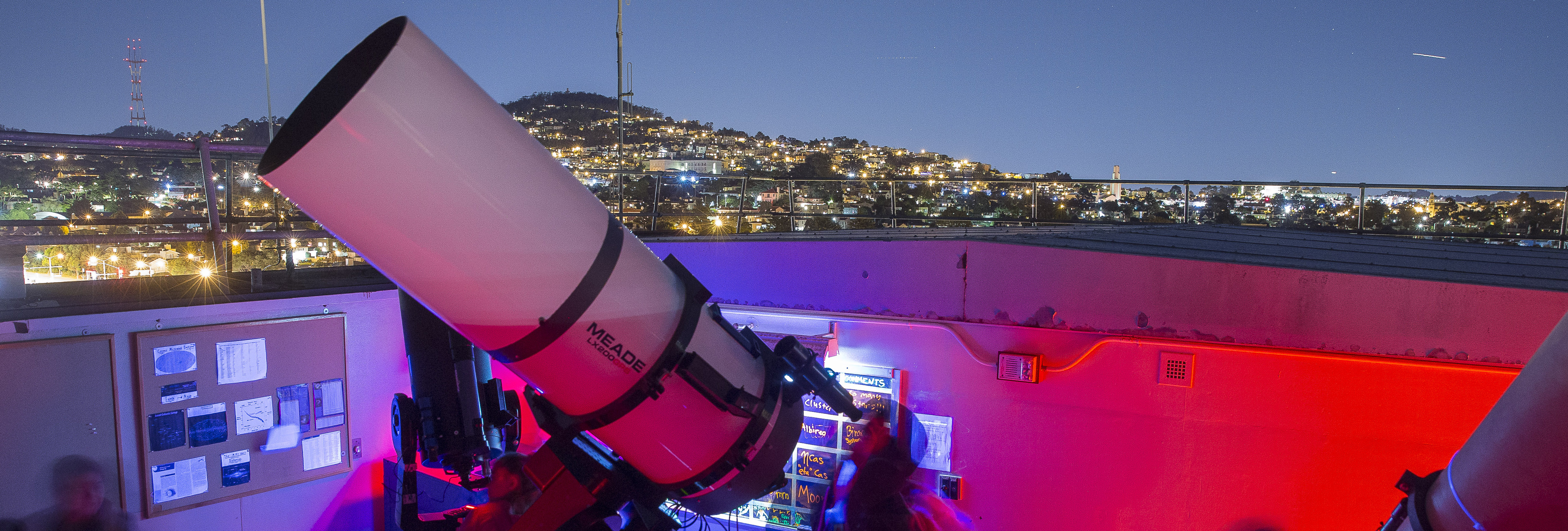The SF State Observatory is a student-run facility open to all students, staff, and members of the public two or three nights per week in fall and spring semesters. With the aid of observatory docents, visitors use telescopes to look at craters on the Moon, the rings of Saturn, giant star clusters, nebulae created by dying stars, the Andromeda galaxy, and much more. Need a study break? Drop by, and bring a friend!
*** The Observatory is open ONLY when skies are clear! Please see SF State Instagram to check if we are closed due to poor weather conditions! ***
Fall 2025 Public Open Nights
MONDAY and THURSDAY nights
WHEN SKIES ARE CLEAR
| Sept 15, 18, 22, 25, 29 | 7:30 - 9:30 pm |
| Oct 2, 6, 9, 13, 16, 20, 23, 27, 30 | 7:00 – 9:30 pm |
| Nov 3, 6, 10, 13, 17, 20 | 6:30 - 9:00 pm |
| Dec 1, 4 | 6:30 - 9:00 pm |
|
The observatory will be CLOSED for Fall Recess, Nov 24 - Nov 28. The LAST open public night in Fall 2025 is Thursday, Dec 4, 2025. |
How to get to the observatory
- Take the elevator to the 9th floor of Thornton Hall.
- Find the stairwell close to the elevator.
- Walk to the top of the stairs.
- The door to the observatory will be on your LEFT.
Weather updates
For up-to-date information about whether the skies are clear and the Observatory is open, check Instagram: SF State Observatory on Instagram
Highlights for Fall 2025
- Saturn and its large moon Titan! (starting late September and for the rest of the semester)
- Double star Mizar (actually a quadruple system!)
- Visual binary star Albireo (a beautiful pair with contrasting colors)
- Globular star clusters M13 and M15 (gravitationally-bound spherical clusters of hundreds of thousands of ancient stars)
- Planetary nebula M57 (the "Ring" Nebula--a star in its death-throes)
- Andromeda galaxy (nearest spiral galaxy to the Milky Way; also known as M31)
Visit Us
Thornton Hall, 10th Floor
San Francisco State University
1600 Holloway Avenue
San Francisco, CA 94132
Questions & Inquiries?
Please contact Jim Gibson (Planetarium & Observatory Staff) at jimg@sfsu.edu or 415-338-6164.
